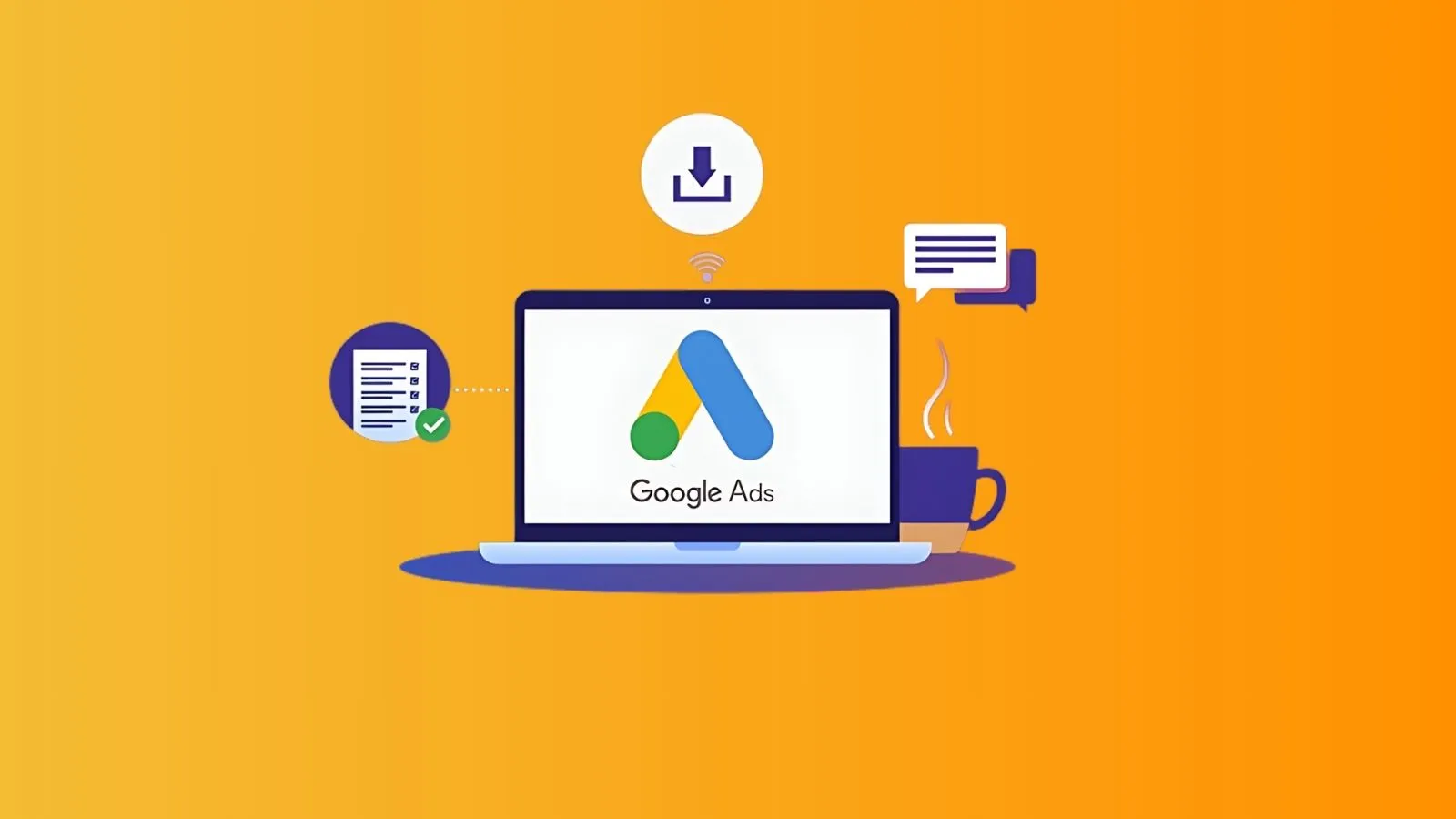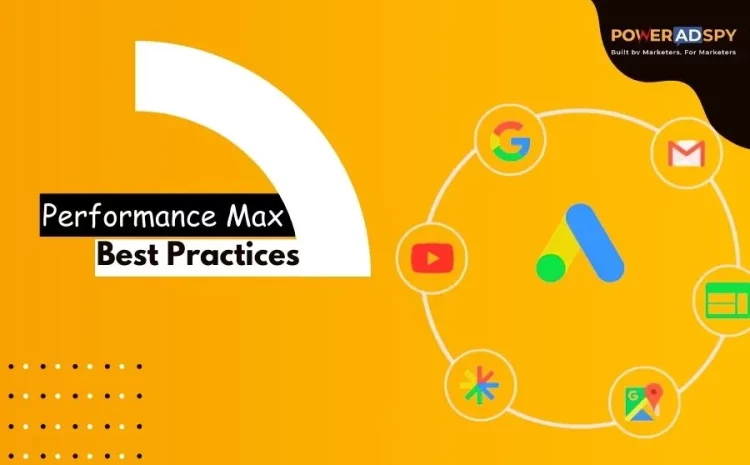Top 6 Performance Max Best Practices That Skyrocket Your Ads
If you are a marketer, staying ahead of the curve is the key to driving results and maximizing ROI for your business. An innovation that’s been making waves in online marketing is “Google’s Performance Max campaign.”
With the introduction of performance max campaigns in 2022, it has become easier for marketers to optimize their ads further. It can help you to streamline the targeting using past ad analytic data to ensure success for new campaigns.
In this comprehensive blog and guide, we will discuss Performance Max campaigns and the Performance Max best Practices with ad examples. So let’s get started.
Listen To The Podcast Now!
What Is Google Performance Max?
Before getting into Performance Max Best Practices, we should learn what Google PMax is.
Google introduced Performance Max campaigns to streamline advertising across various Google properties, including Search, Display, YouTube, and Discover. Performance Max campaigns dynamically allocate your budget to the channels where your ads are most likely to drive conversions, ensuring maximum impact and efficiency.
Here are some easy steps to access Google PMax, then we will dive into performance max best practices –
So, here’s how it goes:
- Click the blue “+” button to start a new campaign.
- Select “Performance Max” as your campaign goal.
- Choose your specific campaign objective: online sales, leads, store visits, or app installs.
- Define your target audience through demographics, interests, and online behavior.
- (Optional) Upload your Merchant Center feed for dynamic ad content.
- (Optional) Exclude specific audiences if needed.
- Review your settings and hit “Create campaign” to go live!
Once you hit the go button and launch your campaign, Google jumps into action. It’ll whip up ads across the channels whenever it sees a chance, using its machine learning to ensure your ads pop up at just the right moment, with the perfect bid, all geared towards reaching your goal.
Why Do We Need Performance Max Best Practices?
 Let us try to understand why we need PMax campaigns through an example.
Let us try to understand why we need PMax campaigns through an example.
Consider a retail company launching a new product line targeting young professionals interested in fashion.
Traditionally, the company would need to create separate campaigns for Google Search, Display, YouTube, and Discover, each requiring manual management and optimization. With Performance Max, however, the process is streamlined. The company simply sets its campaign goal, uploads ad creatives such as images, videos, and copywriting, and lets Google’s machine learning algorithms do the rest.
Performance Max Best Practices automatically allocates budget across various channels, analyzes user behavior in real-time, and adjusts bids and placements to maximize conversions.
As a result, the retail company experiences increased visibility and engagement across Google platforms, reaching its target audience more effectively. With Performance Max, the company can focus on creating compelling ad creatives and strategic planning, knowing that campaign management and optimization are in capable hands.
Through this easy illustration, we discussed why we need PMax. These are some other points you should consider reading, then after we will be discussing performance max best Practices that you should apply.
Efficiency
It helps to automate campaign management and simplifies processes by consolidating campaign management into a single platform, saving time and resources. Whereas traditional advertising methods often require extensive manual effort to manage campaigns across multiple platforms.
Automation
PMax eases the optimization process by automating it, allowing advertisers to focus on strategic decision-making rather than routine tasks. Google’s machine learning algorithms continuously analyze data to adjust bids, placements, and targeting, optimizing campaign performance.
Maximized Reach
Performance max best practices campaigns empower marketers to reach users across a wide range of Google properties, including Search, Display, YouTube, and Discover. This broad reach ensures that advertisers can connect with their target audience wherever they are online, increasing visibility and engagement. It increases the reach of the campaign across various Google properties.
Data-Driven Insights
When integrated with Google Analytics, Performance Max provides valuable insights into campaign performance and user behavior. Using Google Analytics, advertisers can access detailed analytics and metrics to track key performance indicators and make informed decisions to optimize their campaigns further.
These are some benefits you can have from PMax campaigns. Now, let’s delve into the main section of the blog and learn performance max best practices.
Also Read :
7 Important Google Ads Updates You Need To Know
7 Google Ads Examples And How To Use Their Strategies In 2024
Top 6 Performance Max Best Practices
 To maximize your campaign performance, there are some best practices you can implement in your PMax campaign. These are –
To maximize your campaign performance, there are some best practices you can implement in your PMax campaign. These are –
1. Optimize Feed:
A well-structured product feed forms the foundation of a successful Performance Max campaign. The effectiveness of your product feed directly impacts the visibility of your products in search results and their competitiveness compared to other products. You can Optimize by performance max best practices in the following ways-
Ensure your feed is comprehensive, accurate, and up-to-date with relevant information about products or services.
Optimize product titles, descriptions, and attributes to make it easier for Google’s algorithms to match your ads with user queries.
Make sure your feeds meet all technical requirements, such as perfect formatting.
2. Organize Asset Group
Organize your assets into cohesive groups based on themes, product categories, or audience segments. It allows Google to provide a better understanding of your campaign’s objectives and optimize ad delivery accordingly. Experiment with different asset combinations to identify which groups perform best for your goals.
3. Add Audience Signals:
Audience signals refer to various types of data and insights used to target specific groups of users with ads based on their demographics, interests, online behaviour, and other relevant criteria.
With these performance max best practices, utilize Google’s vast database of audience targeting options to reach the right users with your ads. Incorporate audience signals such as demographics, interests, and online behaviour (Ad fatigue) to tailor your messaging and maximize relevance. Continuously refine your audience targeting based on performance data to optimize campaign efficiency.
4. Enhance creative assets:
Make sure to use top-notch images, videos, and ad content that connect with the people you’re trying to reach and get your brand message across loud and clear. Try different versions of your creative stuff to see what grabs your audience’s attention and gets them clicking and buying. Keep your creative content up-to-date and fresh to stay relevant and bring in those results over the long haul.
5. Exclusion
Implement performance max best Practices and exclusion criteria to refine your targeting and ensure your ads are visible to the most relevant audience. Excluding irrelevant keywords, placements, or audience segments, these are unlikely to drive conversions or align with your campaign objectives. Regularly review and update exclusion lists based on performance insights to improve campaign efficiency.
6. Check Insights for Reporting:
Regularly monitor campaign performance metrics and leverage Google’s reporting tools to gain actionable insights into audience behavior, ad performance, and conversion trends. Use this data to make informed decisions about budget allocation, audience targeting, and creative optimization. Continuously iterate and refine your Performance Max campaigns based on performance insights to drive ongoing improvements and maximize results.
These were performance max best practices and implementing these will help you get the desired results. Next, we will be learning about these ads with illustrations.
Performance Max Ad Examples
It is easier to understand through google ads examples, so we will make you understand through examples of the PMax campaign.
E-commerce Ad Example:
Imagine you’re searching for a new pair of running shoes. You type in your query on Google, and right at the top of the search results, you see a visually captivating ad featuring various styles of running shoes, each tailored to different types of runners – from beginners to marathon enthusiasts. The ad highlights key features like lightweight design, cushioned soles, and breathable materials, all accompanied by compelling imagery and a clear call to action, prompting you to “Shop Now.” By leveraging performance max best Practices, this ad dynamically adjusts its content and placement based on your search intent and behavior, ensuring you get presented with the most relevant products at the right moment.
Travel Ad Example:

You’re browsing YouTube for vacation inspiration, and before the video starts, you’ve got an enticing ad showcasing stunning footage of tropical beaches, vibrant cityscapes, and thrilling outdoor adventures. It jumps from one destination to another, with happy travelers talking about how great their trips were. Plus, there are special deals on hotels and tours that you just can’t resist. The option appears with a “Book now” call to action, and you can book your dream vacation right there with just a click! This ad uses Google’s vast network of websites and channels to find people like you who love to travel, no matter where you are online.
If you want to explore more Google ads updates and are looking for a Google ad spy tool, we will reveal a powerful ad spy tool that can help you in your Google ad marketing journey. Integrate this spy tool with performance max best Practices and unlock your marketing potential.
PowerAdSpy – Google Ad spy tool
In the competitive world of online advertising, staying ahead of the curve is essential for success. That’s where PowerAdSpy comes in – your ultimate Google ad spy tool designed to give you a competitive edge in digital marketing.
With PowerAdSpy, you can uncover the strategies and tactics used by your competitors to drive traffic, engagement, and conversions through Google ads. Here’s how PowerAdSpy’s features can help you stay ahead of the game:
Comprehensive Ad Database: PowerAdSpy encompasses a vast database of millions of ads and Google ads, allowing you to explore a collection of ad creatives and ideas across different niches and regions.
Advanced Search Filters: With PowerAdSpy’s advanced search filters, you can narrow down your search to specific criteria such as keywords, ad type, ad placements, and more, making it easier to find relevant Google ads that match your interests and objectives.
Ad Creative Analysis: It enables marketers to discover creative elements of ads, including ad copy, images, and call-to-action buttons, to uncover what resonates most with your target audience and inspire your ad creatives.
Competitor Analysis: Compare your ad performance against your competitors and gain valuable insights into their strategies, strengths, and weaknesses to inform your advertising strategy.
Conclusion
Google Performance Max has eased and streamlined campaign management. It has automated the campaign optimization to avoid manual efforts, hence improving overall campaign performance.
It helps to streamline advertising across various Google properties, including Search, Display, YouTube, and Discover.
Incorporate performance max best Practices to boost your campaign and acquire more sales and conversions.
PowerAdSpy tool is a Google ad spy tool that helps you to perform competitive analysis, derive ideas, and learn strategies for a successful marketing campaign.







